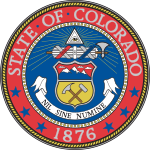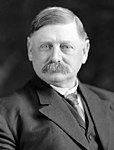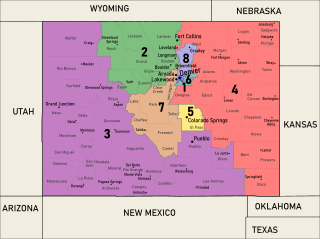
Since Colorado became a U.S. state in 1876, it has sent congressional delegations to the United States Senate and United States House of Representatives, beginning with the 44th United States Congress. Prior to statehood, the Colorado Territory sent non-voting delegates to the House of Representatives from 1861 to 1876. Each state elects two senators to serve for six years, and members of the House to two-year terms. Each state elects two senators to serve for six years in general elections, with their re-election staggered. Prior to the ratification of the Seventeenth Amendment in 1913, senators were elected by the Colorado General Assembly. Each state elects a varying number of, but at least one, member of the House, depending on population, to two-year terms. Colorado has sent eight members to the House in each congressional delegation since the 2020 United States Census.

The 1912–13 United States Senate elections were held on various dates in various states. They were the last U.S. Senate elections before the ratification of the Seventeenth Amendment in 1913, establishing direct elections for all Senate seats. Senators had been primarily chosen by state legislatures. Senators were elected over a wide range of time throughout 1912 and 1913, and a seat may have been filled months late or remained vacant due to legislative deadlock. Some states elected their senators directly even before passage of Seventeenth Amendment. Oregon pioneered direct election and experimented with different measures over several years until it succeeded in 1907. Soon after, Nebraska followed suit and laid the foundation for other states to adopt measures reflecting the people's will. By 1912, as many as 29 states elected senators either as nominees of their party's primary or in conjunction with a general election.
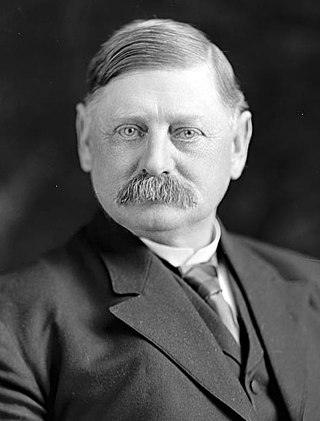
John Franklin Shafroth was an American lawyer and politician who served as a representative, member of the United States Senate, and Governor of Colorado during the late 19th and early 20th centuries.

Charles Winfield Waterman was a Colorado attorney and politician. He is most notable for his service as a United States senator from Colorado.

The 1958 New York state election was held on November 4, 1958, to elect the governor, the lieutenant governor, the state comptroller, the attorney general, a judge of the New York Court of Appeals and a U.S. Senator, as well as all members of the New York State Assembly and the New York State Senate.
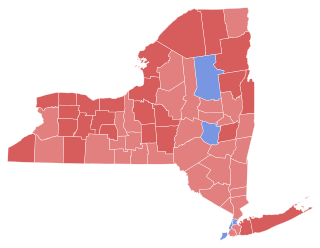
The 1916 New York state election was held on November 7, 1916, to elect the governor, the lieutenant governor, the Secretary of State, the state comptroller, the attorney general, the state treasurer, the state engineer, a U.S. Senator, the chief judge and an associate judge of the New York Court of Appeals, as well as all members of the New York State Assembly and the New York State Senate.

The 1914 New York state election was held on November 3, 1914, to elect the governor, the lieutenant governor, the Secretary of State, the state comptroller, the attorney general, the state treasurer, the state engineer, a U.S. Senator and a judge of the New York Court of Appeals, as well as all members of the New York State Assembly and the New York State Senate, and delegates-at-large to the New York State Constitutional Convention of 1915.

The 1906 New York state election was held on November 6, 1906, to elect the governor, the lieutenant governor, the Secretary of State, the state comptroller, the attorney general, the state treasurer and the state engineer, as well as all members of the New York State Assembly and the New York State Senate.

The 1964 United States Senate election in New York was held on November 3, 1964. Incumbent Republican U.S. Senator Kenneth Keating ran for re-election to a second term, but was defeated by Robert F. Kennedy.

The Colorado Caucus is the electoral process used in Colorado to appoint candidates for certain political offices and start the process of electing new leaders for political party leadership. It takes the form of a series of precinct caucuses, meetings of registered electors within a precinct who are members of a particular major political party. The purpose of precinct caucuses is to elect precinct committee persons and delegates to county assemblies, including those that elect delegates to the presidential nominating conventions.

The 1924 United States Senate special election in Colorado took place on November 4, 1924, to fill the remainder of the term for which Samuel D. Nicholson was elected in 1920. Nicholson died in office on March 24, 1923, and Democratic Governor William Ellery Sweet appointed Alva B. Adams, a prominent Pueblo attorney, to fill the vacancy. Adams, however, declined to be a candidate in the special election, instead challenging incumbent Republican Senator Lawrence C. Phipps in the regular election the same year.

The 1930 United States Senate election in Colorado took place on November 4, 1930. Republican Senator Lawrence C. Phipps declined to run for re-election, resulting in an open race to replace him. Edward P. Costigan, one of the founding members of the Progressive Party in Colorado and a former member of the United States Tariff Commission, won the Democratic nomination and faced attorney George H. Shaw, the Republican nominee, in the general election. Aided by the nationwide Democratic landslide, Costigan handily defeated Shaw, becoming the first Democrat elected to the Senate from Colorado since 1914.

The 1912 Colorado gubernatorial election took place on November 8, 1912. Democratic state Senator Elias M. Ammons defeated the Progressive, Republican and Socialist candidates future Senator Edward P. Costigan, Clifford C. Parks and Charles A. Ashelstrom with 42.91% of the vote.

The 1982 Colorado gubernatorial election was held on November 2, 1982. Incumbent Democrat Richard Lamm defeated Republican nominee John Fuhr with 65.69% of the vote.

The 1918 United States Senate election in Colorado took place on November 5, 1918. It was the second direct U.S. Senate election in Colorado following the ratification of the Seventeenth Amendment, and the first for the Class 2 Senate seat. Democratic senator John F. Shafroth ran for re-election to a second term, and was opposed by Denver businessman Lawrence C. Phipps, the Republican nominee, in the general election. As Republicans made gains nationwide, they performed well in Colorado, too, and Phipps unseated Shafroth by a thin margin.

The 1962 Colorado gubernatorial election was held on November 6, 1962. Republican nominee John Arthur Love defeated Democratic incumbent Stephen McNichols with 56.67% of the vote.

The 1952 Colorado gubernatorial election was held on November 4, 1952. Incumbent Republican Daniel I. J. Thornton defeated Democratic nominee John W. Metzger with 57.08% of the vote.

The 1926 Colorado gubernatorial election was held on November 2, 1926. Democratic nominee Billy Adams defeated Republican nominee Oliver Henry Shoup with 59.84% of the vote.

The 1908 Colorado gubernatorial election was held on November 3, 1908. Democratic nominee John F. Shafroth defeated Republican nominee Jesse Fuller McDonald with 49.41% of the vote.

The 2012 Colorado Republican presidential caucuses took place on 7 February 2012. It was part of the 2012 Republican Party presidential primaries.

